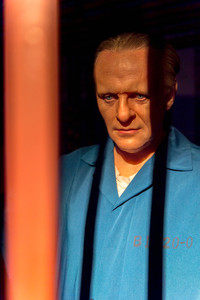by Patricia Bradley, @PTBradley1
 Creating heroes and heroines is hard enough, but at least writers usually know a few people who qualify for those titles. And it’s easier to get into our hero’s head because we can identify with them—after all, aren’t we the hero of our own story? But what about villains? And sociopaths? Getting into their heads is much harder.
Creating heroes and heroines is hard enough, but at least writers usually know a few people who qualify for those titles. And it’s easier to get into our hero’s head because we can identify with them—after all, aren’t we the hero of our own story? But what about villains? And sociopaths? Getting into their heads is much harder.
Readers do not want someone who is just evil—there needs to be something in the villain the reader can understand and identify with—they need to be human. But how do we as authors create that antagonist, especially if it’s a sociopath?
That was the problem I had with JUSTICE BETRAYED, which releases tomorrow, June 5. My central antagonist is a sociopath, and I was having trouble connecting to her. I had completed the character exercises. I knew how tall she was, what color eyes she had, even why she might be a sociopath, but she was still flat.
I didn’t have a sociopath friend (thank goodness) that I could study, so I did the next best thing. I Googled sociopaths and read case histories about the type person a sociopath would be. Here are a few things I learned:
- They believe success is all about winning and the loser doesn’t matter.
- They feel justified in doing anything they can get away with to succeed.
- They believe anyone stupid enough to get ripped off deserves it.
- They don’t care if they hurt someone’s feelings.
- Love is HIGHLY overrated.
- Sociopaths have never been in love.
- They believe they are superior to others.
Now I was getting a handle on my sociopathic character. Then I needed to put a face on her. Anthony Hopkins in Silence of the Lambs came to mind. Except I needed a woman. How about Amy Dunn from Gone Girl. Perfect.
Have you noticed how narcissistic she is? In my research I learned that all sociopaths are narcissistic… but not all narcissists are sociopaths. Sometimes they are just really aggressive business people. ☺
I did know a couple of people who had been diagnosed with narcissistic personality disorder, and I began to look at how they reacted to situations. Very quickly I learned someone with narcissistic tendencies related everything to how it affected them.
That meant my antagonist might not kill someone if it were inconvenient. And she believed she was superior to everyone else. And it didn’t matter who she hurt as long as she got what she wanted.
This is how I was able to get into my antagonist’s head and experience the world through her eyes—as much as I could without actually being a sociopath. She was the hardest character I’ve ever written.
How about you? How do you get into your character’s head when the character doesn’t reflect your values?
In an effort to get her security consulting business off the ground, Kelsey Allen has been spending a lot of time up in the air, rappelling down buildings and climbing through windows to show business owners their vulnerabilities to thieves. When she is hired to pose as a conservator at the Pink Palace Museum in order to test their security weaknesses after some artifacts go missing, she’s ecstatic. But when her investigative focus turns from theft to murder, Kelsey knows she’s out of her league–and possibly in the cross hairs. When blast-from-the-past Detective Brad Hollister is called in to investigate, Kelsey may find that he’s the biggest security threat yet . . . to her heart.
 Patricia Bradley lives in North Mississippi with her rescue kitty Suzy and loves to write suspense with a twist of romance. Her books include the Logan Point series and two Harlequin Heartwarming romances. Justice Delayed, a Memphis Cold Case Novel, is the first book in her next series and it releases January 31, 2017. When she has time, she likes to throw mud on a wheel and see what happens.
Patricia Bradley lives in North Mississippi with her rescue kitty Suzy and loves to write suspense with a twist of romance. Her books include the Logan Point series and two Harlequin Heartwarming romances. Justice Delayed, a Memphis Cold Case Novel, is the first book in her next series and it releases January 31, 2017. When she has time, she likes to throw mud on a wheel and see what happens.


 Justice Buried
Justice Buried